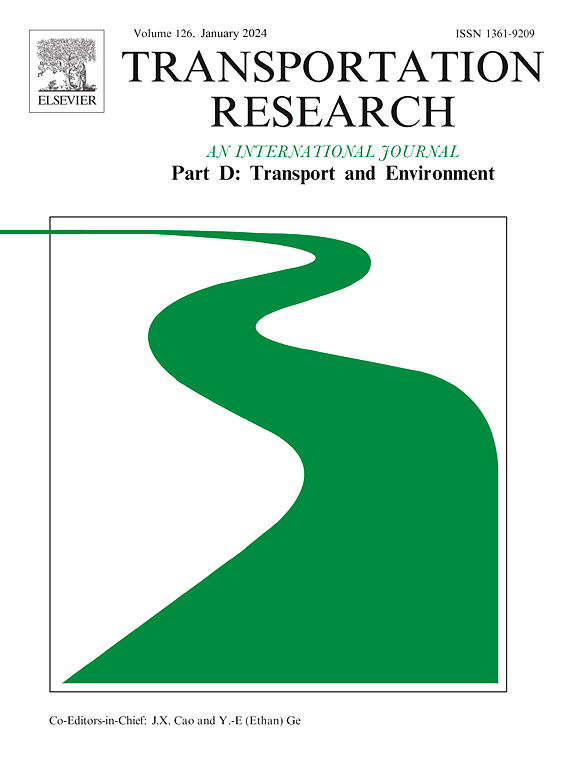Tugboat electrification planning for container ports
IF 7.3
1区 工程技术
Q1 ENVIRONMENTAL STUDIES
Transportation Research Part D-transport and Environment
Pub Date : 2025-02-01
DOI:10.1016/j.trd.2024.104565
引用次数: 0
Abstract
Tugboat assistance is essential for port operations, supporting vessels during berthing, unberthing, and shifting operations. However, significant emissions and pollutants generated by these operations have prompted ports to adopt electrification measures. Electric tugboats have emerged as a promising solution, but their widespread adoption is hindered by the significant capital investment required for electric tugboat purchase and charging facility deployment. To address this problem, this study focuses on strategic planning for the purchase of electric tugboats and the deployment of charging facilities, considering the utilization of existing diesel tugboats, in order to achieve emissions reduction and lower investment costs for the port operator. Additionally, this study also designs the tugboat schedule for the operational phase to effectively meet the tugging demands of vessels. This schedule includes managing charging processes of electric tugboats and coordinating work shifts of both electric and diesel tugboats. A novel integer programming model is then developed to address the investigated problem of integrating strategic and operational phases. Extensive numerical experiments are conducted to demonstrate the applicability of the proposed model. The computational results indicate that introducing electric tugboats can significantly reduce the total emissions of CO2, SOx, NOx, and PM by 91.83%, compared to the scenario where only diesel tugboats are used. Furthermore, the study examines the impacts of various key factors on the emissions reduction and efficient operations to provide some managerial insights for the port operator.
求助全文
约1分钟内获得全文
求助全文
来源期刊
CiteScore
14.40
自引率
9.20%
发文量
314
审稿时长
39 days
期刊介绍:
Transportation Research Part D: Transport and Environment focuses on original research exploring the environmental impacts of transportation, policy responses to these impacts, and their implications for transportation system design, planning, and management. The journal comprehensively covers the interaction between transportation and the environment, ranging from local effects on specific geographical areas to global implications such as natural resource depletion and atmospheric pollution.
We welcome research papers across all transportation modes, including maritime, air, and land transportation, assessing their environmental impacts broadly. Papers addressing both mobile aspects and transportation infrastructure are considered. The journal prioritizes empirical findings and policy responses of regulatory, planning, technical, or fiscal nature. Articles are policy-driven, accessible, and applicable to readers from diverse disciplines, emphasizing relevance and practicality. We encourage interdisciplinary submissions and welcome contributions from economically developing and advanced countries alike, reflecting our international orientation.

 求助内容:
求助内容: 应助结果提醒方式:
应助结果提醒方式:


